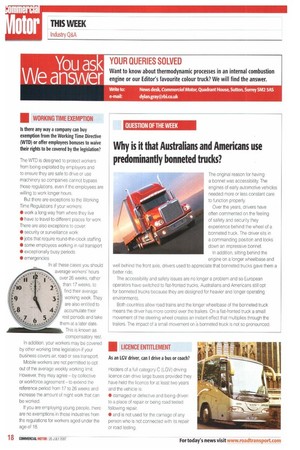Why is it that Australians and Americans use predominantly bonneted trucks?
Page 18

If you've noticed an error in this article please click here to report it so we can fix it.
The original reason for having a bonnet was accessibility. The engines of early automotive vehicles needed more or less constant care to function properly.
Over the years, drivers have often commented on the feeling of safety and security they experience behind the wheel of a bonneted truck. The driver sits in a commanding position and looks down an impressive bonnet.
In addition, sitting behind the engine on a longer wheelbase and well behind the front axle, drivers used to appreciate that bonneted trucks gave them a better ride.
The accessibility and safety issues are no longer a problem and so European operators have switched to flat-fronted trucks. Australians and Americans still opt for bonneted trucks because they are designed for heavier and longer operating environments.
Both countries allow road trains and the longer wheelbase of the bonneted truck means the driver has more control over the trailers. On a flat-fronted truck a small movement of the steering wheel creates an instant effect that multiplies through the trailers. The impact of a small movement on a bonneted truck is not so pronounced.
























































































































































































